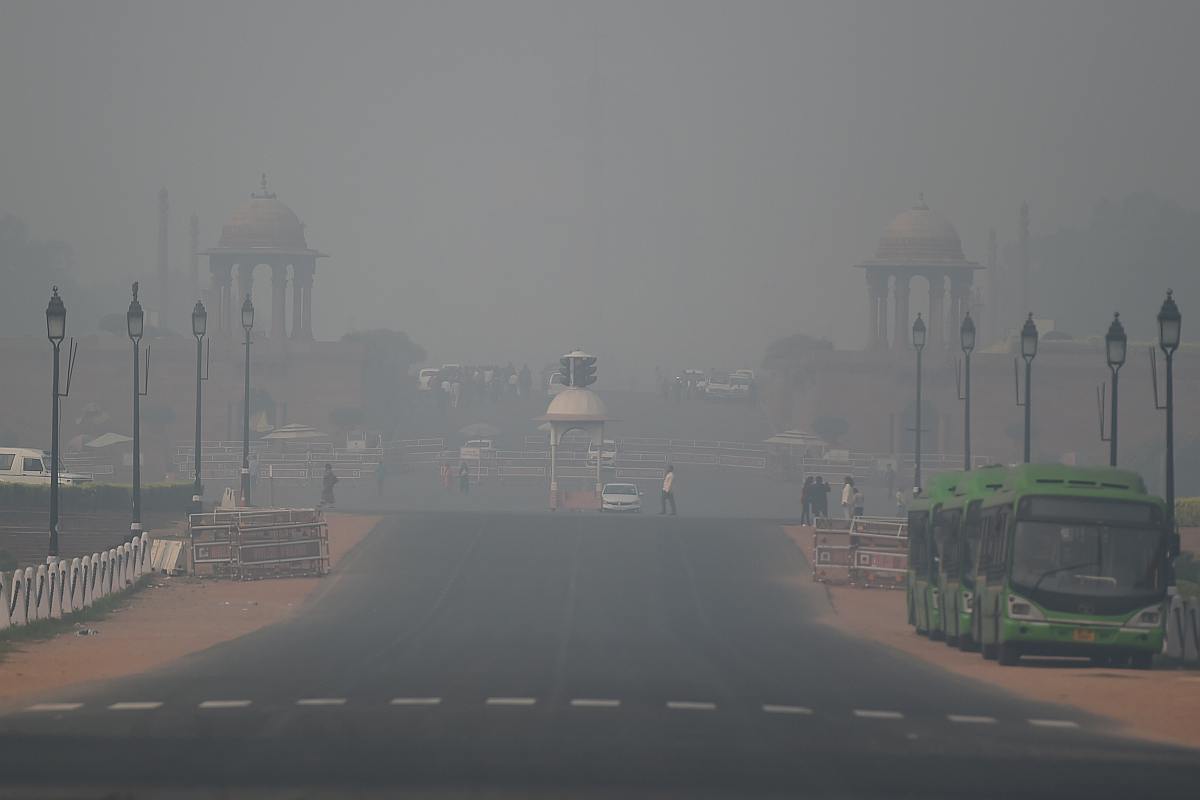Delhi PWD Minister inspects development projects
During the inspection, Minister Pravesh Verma took stock of three important projects. The first is from Bhoro Marg to Sarai Kale Khan where road strengthening work is going on till the ring road.
While overall AQI is in the severe category, PM10 count is at 489 and PM2.5 at 326 is also in the severe category.

Rashtrapati Bhavan, the official residence of the president of India, and other government buildings are obscured by heavy smog conditions in New Delhi on November 12, 2019. (Photo by Money SHARMA / AFP)
After the odd-even scheme was not in effect on November 11 and 12, Delhi’s air quality index (AQI) is at emergency levels again on Wednesday with an overall count of 476 and not much relief is expected for the next two days till Friday.
While overall AQI is in the severe category, PM10 count is at 489 and PM2.5 at 326 is also in the severe category.
Advertisement
The toxic haze continues in the Delhi-NCR and will only worsen on Thursday. According to a forecast by Safar India, no sudden recovery is expected under this condition at least till Friday and the AQI is likely to deteriorate further towards severe plus category by Thursday. The condition may slightly improve by November 15, it said.
Advertisement
According to Safar India, the effective stubble fire counts estimated by SAFAR-integrated multi-satellite methodology have shown decreasing trend and are 740 on November 11, but the transport-level wind direction is forecast to be highly favourable for plume intrusion till Friday.
The share of biomass in Delhi’s air quality is simulated to be 22 per cent on Wednesday even if the present declined fire trend is assumed.
The sky is likely to be partly cloudy for the next two days under the influence of approaching Western Disturbance but no precipitation is expected. A decreasing trend in the mixing depth and ventilation coefficient is forecast for the next two days, it said.
SAFAR’s advisory says that people should avoid all outdoor physical activities.
“Give a miss to walk today. If the room has windows, close them. If the air conditioner provides a fresh air intake option, close it. Keep the room clean – don’t vacuum. Do wet mopping frequently,” it said.
It also advised people to stop any activity if they experience any unusual coughing, chest discomfort, wheezing, breathing difficulty, or fatigue and consult doctor.
“Masks known as N-95 or P-100 respirators may only help if you go out. Do not rely on dust masks for protection,” it added.
After Diwali the severe air pollution caused health emergency in Delhi and grabbed international headlines.
The toxic haze covering Delhi’s skies were predicted for three weeks stagnant conditions caused by the delayed withdrawal of the monsoon and deterioration due to accumulation of pollutants.
The Environment Pollution (Prevention and Control) Authority had on Friday declared a public health emergency after air quality in the NCR region dipped to 410 on October 31.
Following the declaration, the Delhi government ordered the closure of all schools till November 5, banned construction activity and bursting of crackers during the winter season. The biomass burning in Punjab and Haryana hit a new peak with a contribution of 44 per cent in air pollution.
Delhi breathed easier last week, as pollution levels dropped further due to clearer skies and moderate wind speed. An AQI between 0-50 is considered ‘good’, 51-100 ‘satisfactory’, 101-200 ‘moderate’, 201-300 ‘poor’, 301-400 very poor’ and 401-500 severe’. An AQI above 500 falls in the severe plus category.
Advertisement